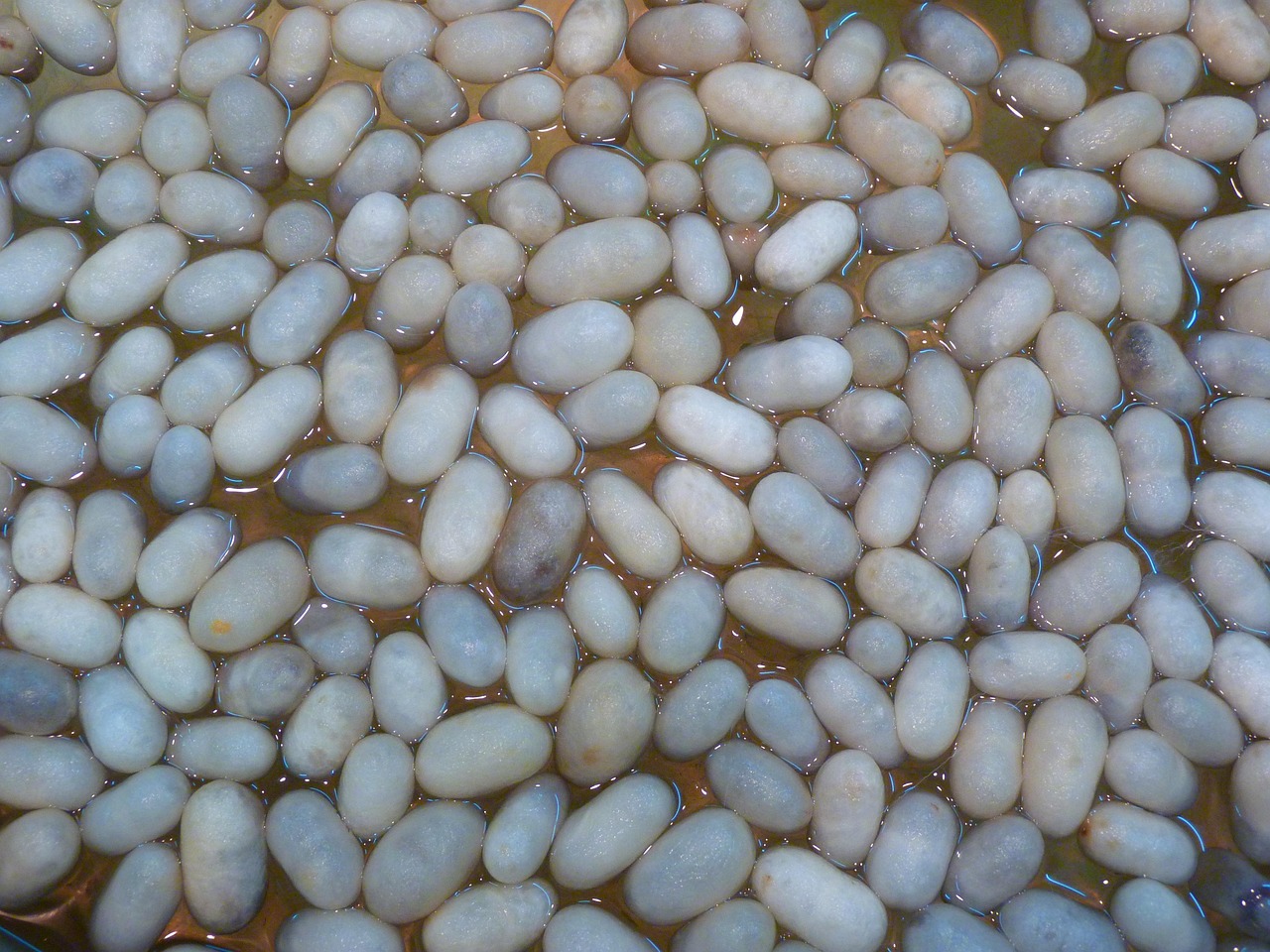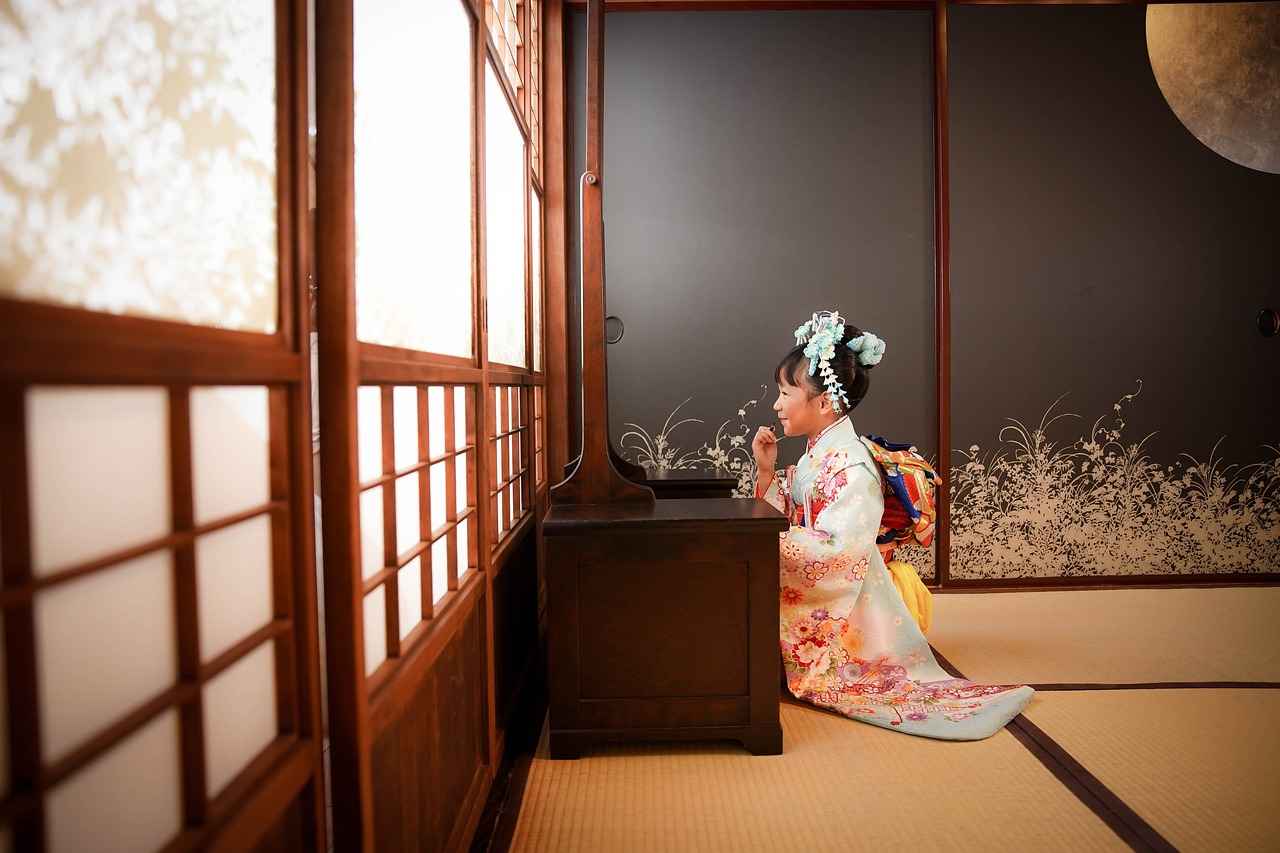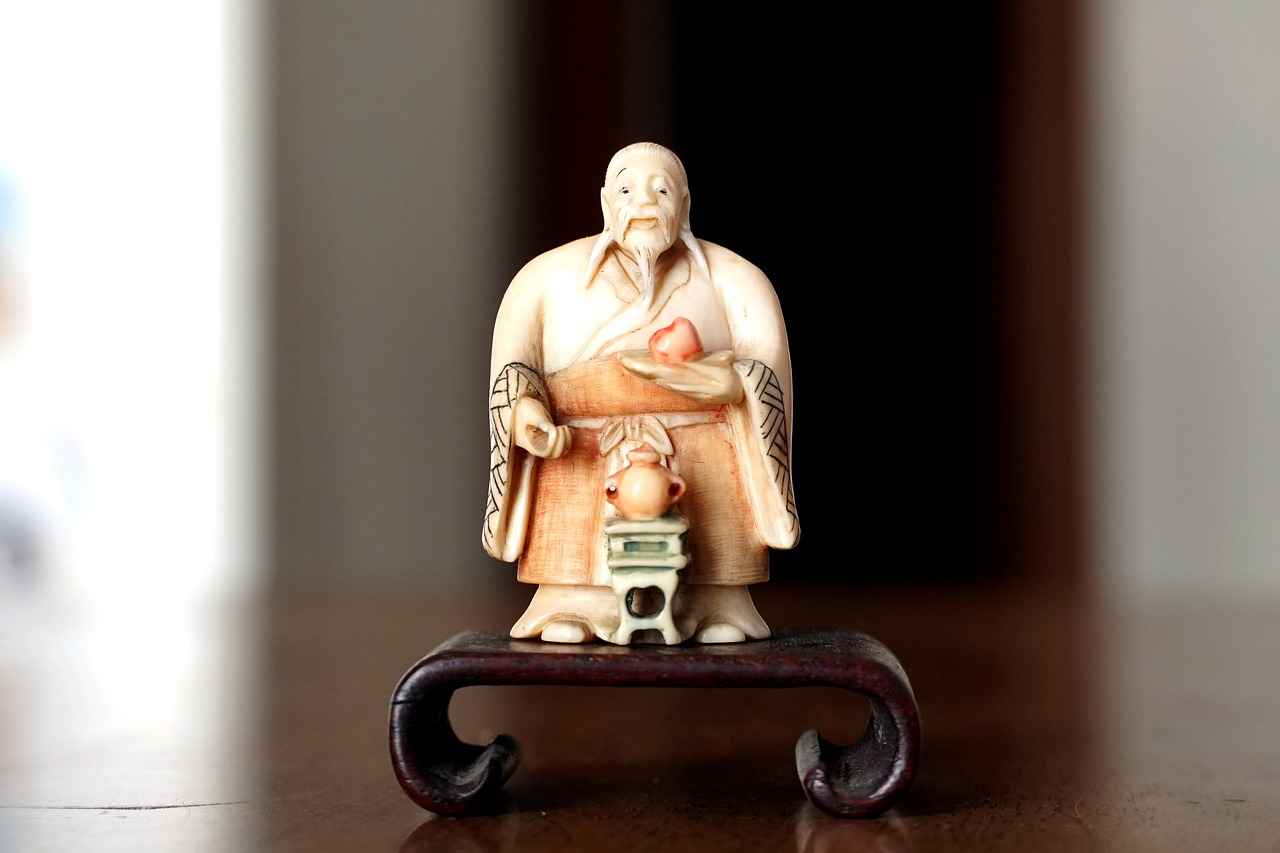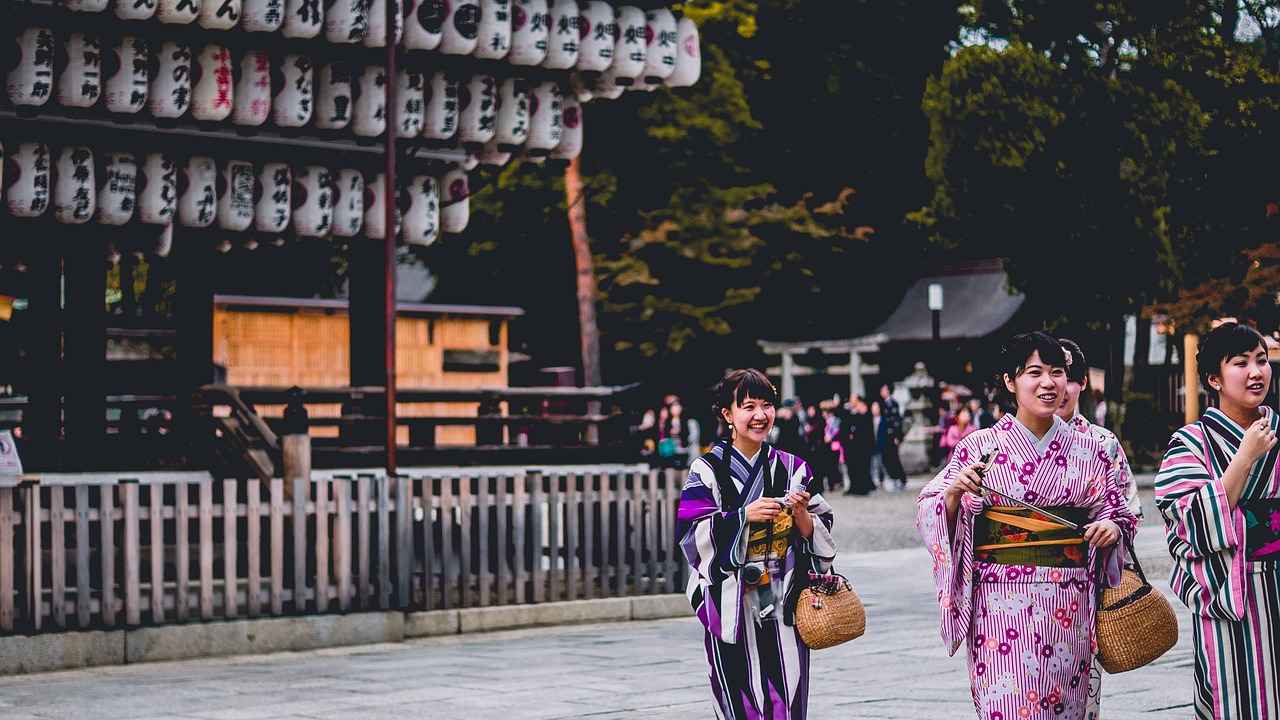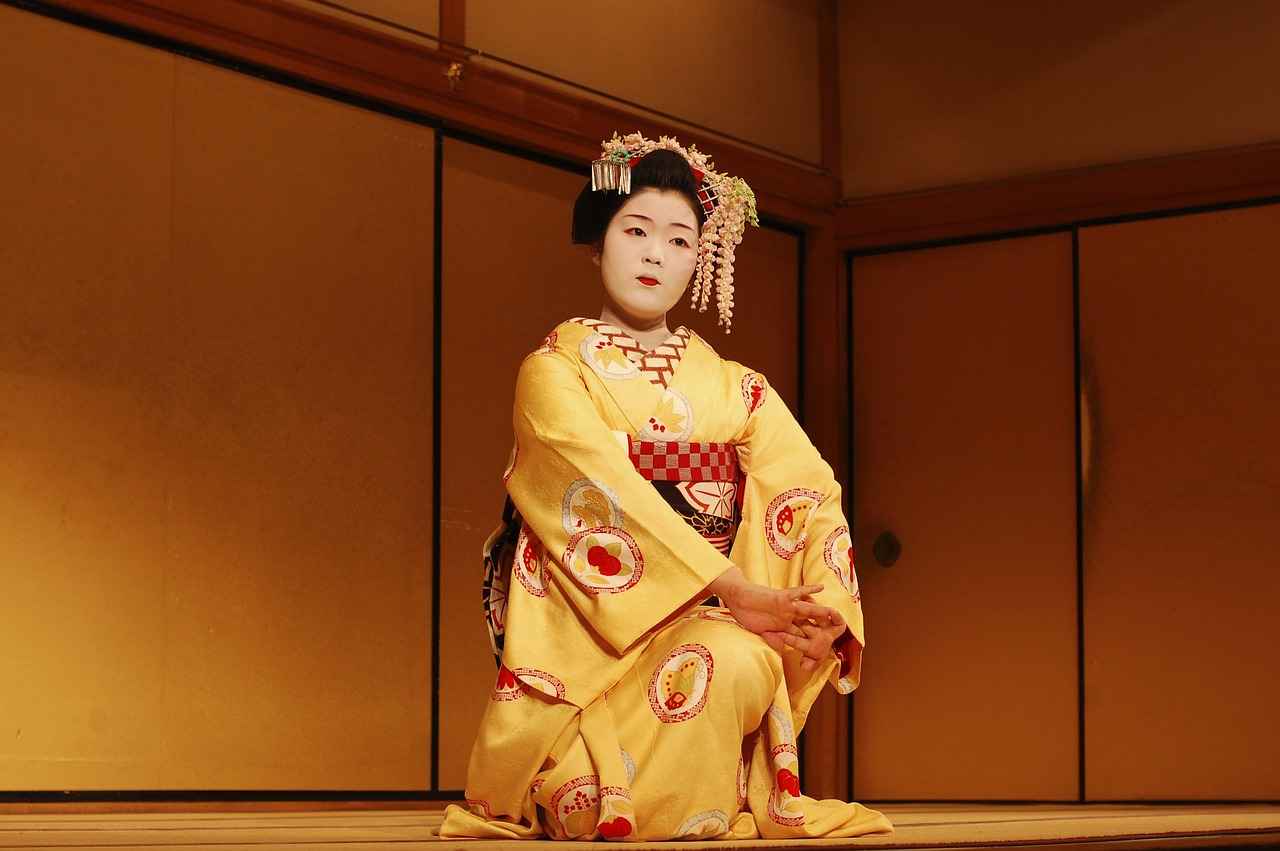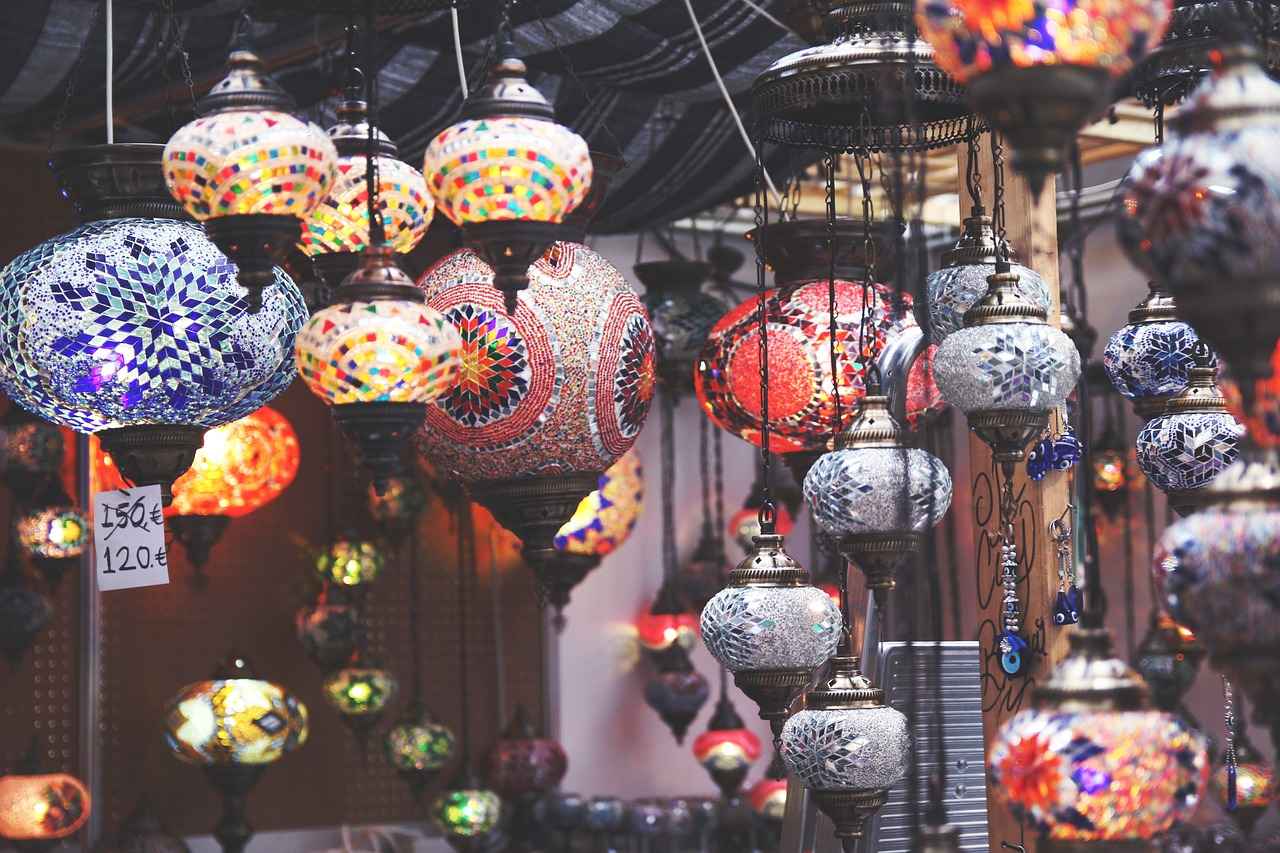Explore the elegance and versatility of silk kimonos, delving into their history, craftsmanship, and reasons they are considered a must-have in luxury fashion.
The Rich History of Silk Kimonos
Silk kimonos have a deep-rooted history in Japanese culture, symbolizing tradition and artistry. These garments date back to the Heian period (794-1185), where they were worn by the aristocracy. Understanding their origins enhances appreciation for this luxurious garment, as each piece tells a story of cultural significance.
The Art of Silk Production
The process of silk production is intricate and labor-intensive, contributing to the fabric’s luxurious feel. Quality silk is cultivated through sericulture, where silkworms are raised and harvested for their cocoons. This meticulous process ensures that only the finest silk is transformed into stunning kimonos, making them a true luxury item.
The Life Cycle of Silk
- Silkworms feed on mulberry leaves.
- They spin cocoons, which are harvested and processed.
- The silk is woven into beautiful fabrics.
The Role of Sericulture
Sericulture is crucial for silk production. This ancient practice impacts the quality and availability of silk, ensuring that each kimono is not only beautiful but also sustainable.
The Weaving Techniques
Different weaving techniques can produce various textures and patterns in silk kimonos. Techniques such as tsumugi and rinzu showcase the craftsmanship behind these exquisite designs, making each piece a unique work of art.
The Benefits of Wearing Silk
Silk is renowned for its unique properties, offering comfort and style. It regulates temperature, allowing it to be worn in various climates, making silk kimonos suitable for both casual and formal occasions.
Styling Your Silk Kimono
Silk kimonos are versatile garments that can elevate any outfit. They can be paired with jeans for a casual look or a sleek dress for formal events. Layering is key to creating a fashionable look, and the right accessories can enhance the elegance of a silk kimono.
Caring for Your Silk Kimono
Proper care is essential for maintaining the beauty of silk kimonos. Washing requires special attention to avoid damage, and storing your kimono correctly can prolong its lifespan. Always fold your kimono gently and keep it in a cool, dry place to protect it from sunlight and moisture.
The Future of Silk Kimonos in Fashion
As fashion evolves, silk kimonos continue to hold a place of prestige. Contemporary designers are reimagining this classic piece for modern wardrobes, ensuring that silk kimonos remain a staple in luxury fashion.
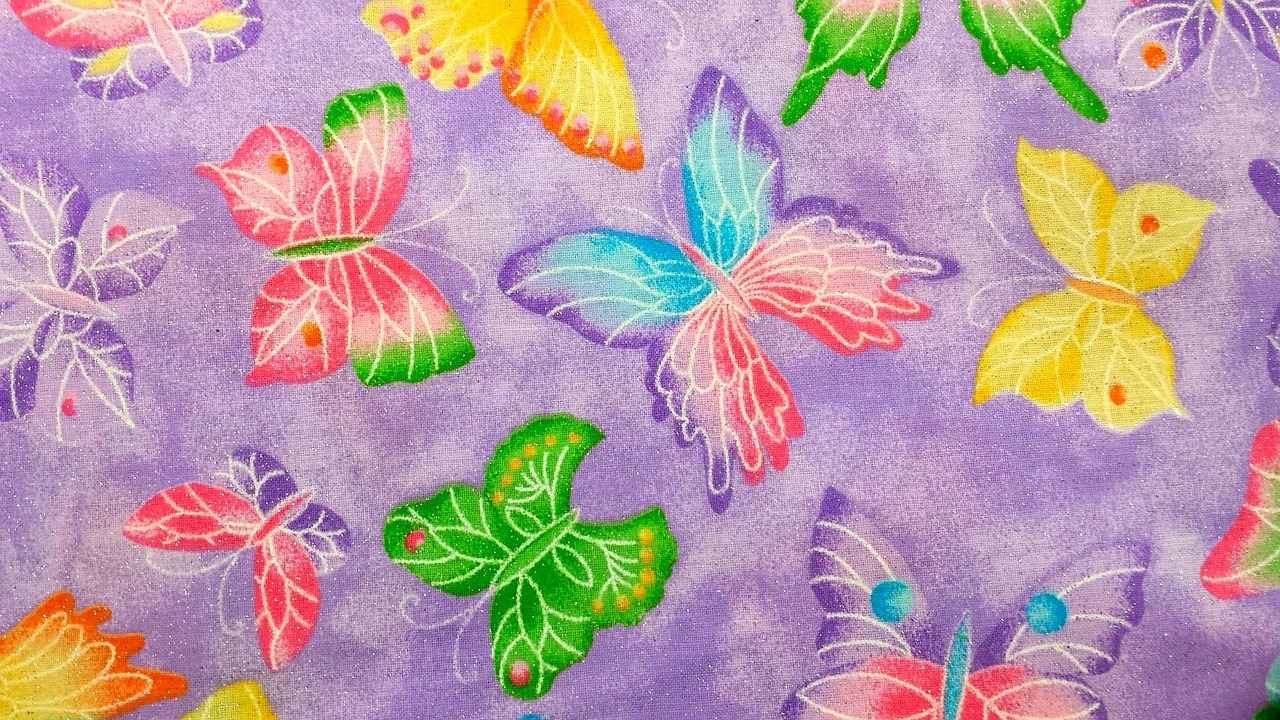
The Rich History of Silk Kimonos
Silk kimonos are not just garments; they are a profound representation of Japanese culture, embodying centuries of tradition, artistry, and craftsmanship. Their significance extends beyond mere fashion, as they have played a vital role in various cultural rituals and ceremonies throughout history.
The origins of silk kimonos can be traced back to the Heian period (794-1185), a time when the art of kimono-making began to flourish. Initially, kimonos were made from plain fabrics, but as Japan’s trade expanded, the introduction of silk transformed these garments into luxurious items adorned with intricate patterns and vibrant colors. This evolution reflects the cultural exchange that has shaped Japan’s identity over the years.
During the Edo period (1603-1868), the kimono became a symbol of status and wealth. The techniques of dyeing and weaving advanced significantly, leading to the creation of stunning designs that showcased the skill of artisans. Each kimono tells a story, often representing the wearer’s family heritage or social standing. The use of motifs, such as cherry blossoms and cranes, is not merely decorative but carries deep symbolic meanings in Japanese culture.
In contemporary society, silk kimonos have transcended their traditional roles, becoming fashionable statements in both casual and formal settings. Designers are reinterpreting these classic garments, blending modern aesthetics with traditional craftsmanship. As a result, the silk kimono remains a timeless piece that continues to captivate hearts around the globe.
In conclusion, understanding the rich history of silk kimonos enhances our appreciation for this exquisite garment. It serves as a reminder of Japan’s cultural heritage and the artistry that goes into creating each piece. Whether worn at a special event or as part of everyday attire, silk kimonos embody a legacy that is both beautiful and meaningful.

The Art of Silk Production
The journey of silk from the cocoon to the luxurious fabric we cherish today is a remarkable process that showcases both nature’s wonders and human craftsmanship. Silk production, also known as sericulture, is a meticulous and labor-intensive endeavor that has been perfected over centuries.
Initially, silk begins its life in the form of silkworms, primarily the Bombyx mori species, which are raised in controlled environments. These silkworms feed exclusively on mulberry leaves, growing rapidly before entering the pupal stage. Once they cocoon themselves in a silky thread, farmers carefully harvest these cocoons, ensuring minimal damage to the delicate fibers.
After harvesting, the cocoons undergo a process called reeling, where the silk threads are unwound. This is a crucial step, as the quality of silk depends significantly on the method of reeling. The threads are then cleaned and dyed, allowing for a variety of colors and patterns, which play a vital role in the final appearance of the silk fabric.
Next, the silk threads are woven into fabric using various techniques. Different weaving methods can create unique textures and designs, adding to the allure of silk kimonos. The craftsmanship involved in weaving silk is an art form in itself, often passed down through generations of artisans.
Ultimately, the intricate process of silk production not only contributes to the fabric’s luxurious feel but also reflects a rich cultural heritage. The dedication and skill involved in creating silk kimonos make them a highly coveted item in the world of fashion.
As we appreciate the beauty of silk kimonos, it’s essential to recognize the extensive journey that each piece has undergone, from the humble silkworm to a stunning garment that embodies elegance and sophistication.
The Life Cycle of Silk
is a captivating journey that transforms silkworms into one of the most luxurious fabrics known to humanity. Understanding this process not only highlights the beauty of silk but also emphasizes the intricate biological mechanisms involved.
Silk production begins with the silkworm, specifically the larvae of the Bombyx mori moth. These tiny creatures feed voraciously on mulberry leaves, growing rapidly until they are ready to spin their cocoons. This phase of their life cycle is crucial, as it sets the foundation for the quality of silk produced. Once the silkworm reaches maturity, it secretes a protein-rich fluid that hardens into a silk thread, forming a protective cocoon.
After approximately 2-3 days, the cocoon is complete, and the silkworm undergoes a transformation into a pupa. This stage is where the magic happens; the silkworm’s body begins to reorganize itself into a moth. However, for silk production, the cocoons are harvested before the moth emerges. This is a delicate process that requires precision to ensure the silk threads remain intact.
| Stage | Duration | Description |
|---|---|---|
| Egg | 1 week | Silkworms hatch from eggs and begin feeding. |
| Larva | 4-6 weeks | Silkworms grow by consuming mulberry leaves. |
| Pupa | 2-3 weeks | Silkworms spin cocoons and undergo metamorphosis. |
| Moth | 1 week | Moths emerge from cocoons, completing the cycle. |
Once the cocoons are harvested, they are boiled or steamed to kill the pupa inside and to soften the silk. The silk threads are then carefully unraveled and spun into skeins, ready for weaving. This labor-intensive process is what makes silk one of the most coveted materials in fashion.
In conclusion, the life cycle of silk is a remarkable testament to nature’s artistry. From the humble silkworm to the luxurious fabric, each step is essential in creating the beautiful silk kimonos that have captivated cultures for centuries.
The Role of Sericulture
Sericulture, the art and science of cultivating silkworms for silk production, has been a vital practice for thousands of years. This ancient method not only plays a significant role in the quality of silk but also influences its availability in the market. Understanding sericulture is essential for anyone interested in the intricate world of silk and its applications in fashion and textiles.
The process begins with the careful selection of silkworm eggs, which are typically sourced from the Bombyx mori species. Once hatched, the larvae are fed a diet primarily consisting of mulberry leaves, which is crucial for their growth and the quality of silk they produce. As the silkworms mature, they undergo a remarkable transformation, spinning cocoons made of a single continuous thread of silk that can measure up to a mile in length.
| Stage | Description |
|---|---|
| Egg | Silkworms begin their life cycle as eggs, which hatch into larvae. |
| Larvae | Silkworms feed voraciously on mulberry leaves, growing rapidly. |
| Cocoon | Silkworms spin cocoons, which are harvested for silk. |
| Processing | Cocoons are boiled to extract silk threads, which are then spun into fabric. |
The impact of sericulture extends beyond the mere production of silk. The quality of the silk is directly linked to the conditions under which the silkworms are raised. Factors such as temperature, humidity, and nutrition can significantly affect the fineness and strength of the silk fibers. High-quality sericulture practices yield silk that is not only luxurious but also durable, making it a preferred choice for high-end fashion items like kimonos.
In conclusion, sericulture is not just a method of silk production; it is a blend of art, science, and tradition. By understanding this ancient practice, we can better appreciate the exquisite quality of silk and its enduring place in the world of fashion.
The Weaving Techniques
Silk kimonos are not only a symbol of elegance but also a testament to the intricate craftsmanship involved in their creation. The various weaving techniques employed in the making of these exquisite garments play a significant role in determining their texture, pattern, and overall aesthetic appeal.
One of the most notable techniques is twill weaving, which creates a diagonal rib pattern. This method enhances the fabric’s durability while providing a luxurious drape. Another technique, jacquard weaving, allows for intricate designs to be woven directly into the fabric, resulting in stunning visuals that can depict anything from floral motifs to geometric patterns.
- Shibori: This ancient dyeing technique involves folding, twisting, and bunching the fabric before dyeing it. The result is a unique pattern that adds depth and character to the kimono.
- Kasuri: A traditional Japanese method where threads are dyed before weaving, creating a blurred effect that is both captivating and complex.
- Saori: A free-form weaving style that encourages creativity and individuality, allowing artisans to express their personal style in each piece.
These techniques are not merely for aesthetics; they also reflect the cultural heritage of Japan. Each pattern and texture tells a story, connecting the wearer to the rich history and artistry of silk production. The meticulous attention to detail and the skill required in these weaving methods ensure that every kimono is a unique work of art.
As you explore the world of silk kimonos, consider how these weaving techniques contribute to their allure and status as a luxury clothing piece. The craftsmanship behind each design is a celebration of tradition, skill, and creativity that continues to captivate fashion enthusiasts around the globe.
The Benefits of Wearing Silk
Silk is a luxurious fabric that has been cherished for centuries, and wearing silk kimonos can offer a multitude of benefits. These elegant garments not only provide comfort but also elevate your style for various occasions. Let’s explore the numerous advantages of incorporating silk kimonos into your wardrobe.
- Unmatched Comfort: Silk is known for its softness and breathability, making it an ideal choice for all-day wear. The fabric drapes beautifully, allowing for ease of movement.
- Temperature Regulation: One of the unique properties of silk is its ability to regulate temperature. It keeps you cool in the summer and warm in the winter, making it suitable for year-round wear.
- Hypoallergenic Qualities: For those with sensitive skin, silk is a hypoallergenic fabric that is less likely to cause irritation compared to other materials.
- Timeless Elegance: The sheen and luster of silk add a touch of sophistication to any outfit. A silk kimono can transform even the simplest attire into a statement piece.
- Versatility: Silk kimonos can be styled in numerous ways, making them perfect for both casual outings and formal events. They can be layered over dresses, paired with jeans, or worn as a standalone piece.
- Easy to Care For: Contrary to popular belief, silk kimonos can be relatively easy to maintain. With proper care, including gentle washing and careful storage, these garments can last for years.
In conclusion, wearing a silk kimono is not just about fashion; it’s about embracing a lifestyle of comfort and elegance. Whether you’re dressing up for a special occasion or looking for something chic to wear at home, a silk kimono is a versatile addition to any wardrobe.

Styling Your Silk Kimono
Silk kimonos are not just beautiful garments; they are versatile pieces that can effortlessly elevate any outfit, whether for a casual gathering or a formal event. Understanding how to style a silk kimono can enhance your wardrobe and make a bold fashion statement.
1. Casual Styling Tips
- Layering: For a relaxed look, pair your silk kimono with a simple white t-shirt and high-waisted jeans. This combination offers a chic yet comfortable vibe.
- Footwear: Sneakers or flat sandals work well for a casual outing. They keep the look laid-back while allowing the kimono to stand out.
- Accessories: Opt for minimal jewelry such as stud earrings or a delicate bracelet to keep the focus on the kimono.
2. Formal Styling Ideas
- Dress it Up: For formal occasions, wear your silk kimono over a fitted dress or tailored trousers. This creates an elegant silhouette that is perfect for evening events.
- Heels: Pairing your outfit with heels will add sophistication and lengthen your legs, enhancing the overall look.
- Statement Jewelry: Choose bold accessories, like a chunky necklace or oversized earrings, to complement the luxurious fabric of the kimono.
3. Seasonal Considerations
- Spring/Summer: Light, airy kimonos can be worn over sundresses or shorts, making them perfect for warm weather.
- Fall/Winter: Opt for heavier silk kimonos and layer them with turtlenecks and long boots for a cozy yet stylish appearance.
In conclusion, styling a silk kimono can be both fun and rewarding. By understanding how to mix and match it with various outfits, you can create looks that are not only fashionable but also uniquely yours. Embrace the elegance of silk kimonos and let your style shine!
Layering with a Kimono is an essential technique for achieving a chic and fashionable look. A silk kimono is not only a statement piece but also a versatile garment that can be styled in numerous ways. Here, we will explore effective tips for layering your kimono with other clothing items, ensuring you make the most of this luxurious piece.
- Choose the Right Base Layer: Start with a simple base layer, such as a fitted t-shirt or a sleek tank top. This allows the kimono to be the focal point of your outfit while providing a comfortable foundation.
- Opt for Complementary Colors: When selecting pieces to layer with your kimono, consider colors that complement its hues. Neutral tones like white, beige, or black work well, but don’t hesitate to experiment with bold colors or patterns that resonate with the kimono’s design.
- Incorporate Different Textures: Mixing textures can add depth to your outfit. Pair your silk kimono with denim jeans, cotton dresses, or even leather leggings for a balanced look that combines elegance with casual comfort.
- Play with Lengths: The length of your base layer can significantly impact your overall appearance. For instance, a longer dress or tunic can create a flowing silhouette, while cropped tops can emphasize the kimono’s length.
- Accessorize Wisely: Accessories can elevate your layered look. Consider adding a statement belt to cinch your waist or chunky jewelry to draw attention to your kimono. Footwear choices, such as ankle boots or elegant sandals, can also enhance the outfit.
In conclusion, layering with a silk kimono offers endless possibilities for creating stylish outfits. By carefully selecting base layers, colors, textures, and accessories, you can effortlessly transition from casual daywear to sophisticated evening attire. Embrace the art of layering and let your silk kimono shine in any setting!
Accessorizing your silk kimono can significantly enhance its elegance and transform your overall look. The right choices in jewelry, bags, and shoes can elevate your ensemble, making it suitable for various occasions. Here are some ideas to consider:
- Jewelry: Opt for delicate pieces that complement the luxurious fabric of silk. Gold or silver earrings with subtle designs can add a touch of sophistication. A statement necklace can also work well, but ensure it does not overpower the kimono’s intricate patterns.
- Bags: Choose a bag that matches the color palette of your kimono. A clutch or a small handbag in a solid color can provide a chic contrast. For a more casual look, consider a woven tote that adds texture without clashing with the silk.
- Shoes: The choice of footwear can make or break your outfit. Elegant heels can enhance the graceful silhouette of a kimono, while flats offer comfort without sacrificing style. Consider shoes with embellishments like beads or sequins for a festive touch.
When accessorizing, remember that less is often more. The goal is to enhance the beauty of the silk kimono without overwhelming it. Additionally, consider the occasion:
- Formal Events: Choose classic accessories that exude elegance, such as pearl earrings and a sleek clutch.
- Casual Outings: Incorporate playful accessories like colorful bangles and a fun handbag for a more relaxed vibe.
In conclusion, the right accessories not only complement your silk kimono but also reflect your personal style. By carefully selecting jewelry, bags, and shoes, you can create a stunning ensemble that highlights the beauty of this luxurious garment.
Caring for Your Silk Kimono
Proper care is essential for maintaining the beauty and longevity of silk kimonos. These luxurious garments require special attention to ensure they remain in pristine condition for years to come. Below are some best practices for cleaning and storing your silk kimono.
Washing and Drying Techniques
- Hand Washing: Whenever possible, hand wash your silk kimono using cold water and a gentle silk detergent. Avoid wringing or twisting the fabric to prevent damage.
- Machine Washing: If you must use a washing machine, opt for the delicate cycle with cold water. Place the kimono in a mesh laundry bag to minimize friction.
- Drying: Never hang your silk kimono in direct sunlight as this can cause fading. Instead, lay it flat on a clean, dry towel or hang it in a shaded area to air dry.
Storing Your Kimono
- Folding: Always fold your silk kimono carefully to avoid creases. Use acid-free tissue paper between the folds to maintain its shape.
- Hanging: If you prefer to hang your kimono, use padded hangers to prevent stretching. Ensure the garment is in a breathable garment bag to protect it from dust.
- Environment: Store your kimono in a cool, dry place away from direct sunlight and humidity. This will help prevent mold and discoloration.
Regular Maintenance
In addition to proper washing and storing, regular maintenance is key. Inspect your silk kimono for any signs of wear or damage, and address them promptly. Consider professional cleaning every few years to keep your garment looking its best.
By following these guidelines, you can ensure that your silk kimono remains a treasured piece in your wardrobe, showcasing its elegance and beauty for many occasions to come.
Washing and Drying Techniques
When it comes to maintaining the beauty of your silk kimono, washing and drying require special attention to detail. Silk is a delicate fabric that can easily be damaged if not handled properly. Here are some essential techniques to ensure your kimono remains in pristine condition:
- Hand Washing is Preferred: Always opt for hand washing your silk kimono instead of machine washing. Fill a basin with cool water and add a few drops of a gentle detergent specifically designed for silk.
- Gentle Agitation: Submerge the kimono and gently agitate the water to distribute the detergent. Avoid scrubbing or twisting the fabric, as this can cause damage.
- Rinse Carefully: After washing, rinse the kimono thoroughly in cool water until all detergent is removed. Do not wring out the fabric; instead, gently press the water out.
- Drying Techniques: Lay the kimono flat on a clean, dry towel. Roll the towel with the kimono inside to absorb excess water. Then, unroll and lay the kimono flat on a dry surface away from direct sunlight.
- Avoid Heat: Never use a dryer or hang the kimono in a way that causes it to stretch. Heat can damage the fibers, leading to shrinkage and loss of shape.
By following these washing and drying techniques, you can preserve the luxurious feel and appearance of your silk kimono for years to come. Remember, proper care not only enhances the longevity of your garment but also ensures that it remains a stunning addition to your wardrobe.
Storing your silk kimono correctly is essential to prolong its lifespan and maintain its beauty. Silk is a delicate fabric that requires special care to ensure it remains in pristine condition for years to come. Here, we will explore the best methods for folding and protecting your garment, ensuring it stays as luxurious as the day you purchased it.
- Choose the Right Storage Environment: Always store your silk kimono in a cool, dry place away from direct sunlight. Excessive heat and light can fade the colors and weaken the fibers.
- Use a Breathable Garment Bag: When storing your kimono, opt for a breathable cotton or muslin garment bag. This will protect it from dust and potential damage while allowing airflow to prevent moisture buildup.
- Folding Techniques: To fold your kimono properly, lay it flat on a clean surface. Start by folding the sleeves inward and then fold the kimono in half lengthwise. Finally, roll it gently from the bottom up to minimize creasing.
- Avoid Hangers: Hanging your silk kimono can stretch the fabric and distort its shape. Instead, store it flat or rolled in a drawer or on a shelf.
- Regular Inspection: Periodically check your stored kimono for any signs of damage or pests. Early detection can prevent more significant issues later.
Protecting your silk kimono from potential hazards is just as important as proper storage. Avoid placing heavy items on top of it, and keep it away from areas where it might be exposed to moisture, like bathrooms or basements. By following these simple yet effective methods, you can ensure that your silk kimono remains a cherished piece in your wardrobe for many years.
In conclusion, proper storage and care are vital for maintaining the elegance and integrity of your silk kimono. By investing a little time in its upkeep, you can enjoy this luxurious garment for generations.
The Future of Silk Kimonos in Fashion
As fashion continuously evolves, silk kimonos remain a timeless symbol of elegance and sophistication. Contemporary designers are embracing this classic garment, reimagining it to fit modern aesthetics while honoring its rich heritage. This article delves into the innovative ways that silk kimonos are being adapted for today’s fashion landscape.
- Modern Takes on Traditional Designs: Designers are blending traditional kimono silhouettes with modern fabrics and patterns. This fusion creates unique pieces that appeal to a broader audience, allowing the silk kimono to transcend cultural boundaries.
- Versatility for Everyday Wear: Silk kimonos are no longer reserved for formal occasions. They are being designed for casual wear, easily styled over jeans or dresses, making them accessible for everyday fashion.
- Eco-Friendly Practices: With a growing emphasis on sustainability, many designers are adopting eco-friendly practices in silk production. This shift not only preserves the environment but also enhances the appeal of silk kimonos to eco-conscious consumers.
- Inclusivity in Fashion: The modern kimono is being tailored for various body types and sizes, promoting inclusivity. This approach ensures that everyone can enjoy the luxury and comfort of silk kimonos.
As we look to the future, the silk kimono is poised to remain a staple in luxury fashion. Its ability to adapt to contemporary trends while retaining its cultural significance makes it a unique garment that appeals to both fashion enthusiasts and casual wearers alike. As designers continue to explore new styles and sustainable practices, the silk kimono is set to thrive in modern wardrobes.
Conclusion: The evolution of silk kimonos in modern fashion highlights the garment’s enduring appeal. By embracing innovation and sustainability, contemporary designers are ensuring that this classic piece remains relevant and cherished for generations to come.
Frequently Asked Questions
- What makes silk kimonos so special?
Silk kimonos are not just clothing; they embody a rich history and exquisite craftsmanship. The luxurious feel of silk, combined with its elegant designs, makes these garments a staple in luxury fashion.
- How should I style my silk kimono?
Styling a silk kimono is all about versatility! You can dress it up with formal wear or keep it casual with jeans. Layering with other pieces and accessorizing effectively can elevate your look effortlessly.
- What are the best practices for caring for a silk kimono?
To maintain the beauty of your silk kimono, hand wash it gently with cold water and mild detergent. When storing, always fold it properly and keep it in a cool, dry place to prevent damage.
- Can silk kimonos be worn in any season?
Absolutely! Silk kimonos are incredibly versatile and can be worn year-round. In warmer months, they provide a lightweight layer, while in cooler seasons, they can be styled with warmer clothing for added elegance.
- Are silk kimonos suitable for all body types?
Yes! Silk kimonos are designed to be flattering for all body types. Their flowing silhouette allows for comfort and style, making them a fantastic choice for anyone looking to enhance their wardrobe.
